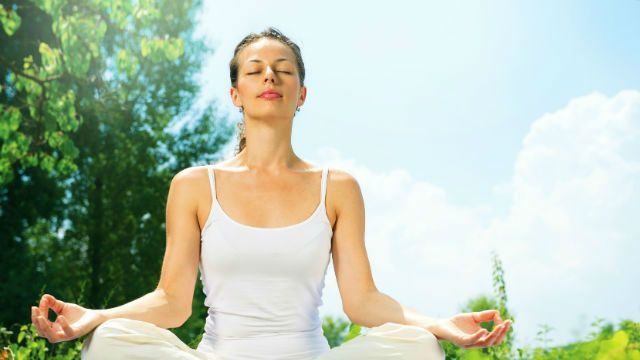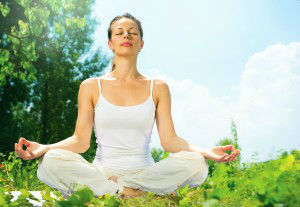
A large body of research shows that meditation can do us a world of good: it has been shown to help lower stress and blood pressure levels, improve sleep quality, improve circulation, alleviate depression and much more. While you can certainly choose to meditate on your own at home, there are many benefits to participating in a guided meditation session.
Participating in guided meditation can teach you the basics of how to meditate most effectively in a relaxed setting, filled with other individuals also wanting to learn. It can also acquaint you with the type of meditation that works best for you.
Some people find that meditating in a structured setting is easier than doing it at home, as it is a time and place specifically allocated for this purpose. The guidance of the instructor can also help some individuals to focus more deeply.
With all of the different types and traditions out there, however, it can be difficult to decide where to begin. The following is a very basic categorization of what to expect from some more well-known types of meditation. Keep in mind that many types of meditation may overlap, and some traditional practices may use techniques that fall into more than one category.
Mindfulness meditation
Mindfulness meditation is probably the most basic form of meditation, and one that is at the root of a number of traditions. It usually consists of sitting still with eyes closed, and observing the movement of thoughts flowing through your mind. Instead of trying to block out or silence these thoughts, you just let them take their natural course without judging them or focusing on one thought above the rest.
The key is to objectively observe the pattern of this flow of thoughts, and also to become aware of the sensations present throughout your body as you meditate. Mindfulness meditation is often combined with breathing meditation, which emphasizes focus on the movement of breath, paying special attention to the space between the inhale and the exhale.
Mantra, rhythmic and other ‘concentration’ meditations
Mantra and rhythmic meditation are centered around focusing the concentration on a specific chant or rhythm. The mantra is usually an ancient word, phrase or song that is chanted repeatedly during meditation in order to draw all focus into the present. ‘Om’ is one very commonly used mantra. It is hard to pin one definition on om, but according to the Mandukya Upanishad:
“Om is the imperishable word. Om is the universe, and this is the exposition of om. The past, the present, and the future, all that was, all that is, all that will be is om. Likewise, all else that may exist beyond the bounds of time, that too is om.”
Rhythmic meditation may draw focus to a particular song or beat, a repeated, intermittent gong, or sometimes a combination of music, chanting and focused breathing. This draws the mind’s focus to the present and helps you to let go of rushing thoughts. Mantra and rhythmic meditation are sometimes categorized as ‘concentration’ or ‘focus’ meditation.
Another type of concentration meditation includes candle meditation, in which participants keep their eyes open, and stare into a flickering flame. Besides improving focus, this can invoke a deep introspective experience. Some Catholic traditions include a type of concentration meditation centered around counting rosary beads.
Visualization meditation
In this type of meditation, which is employed by numerous traditions, participants close their eyes and draw a specific mental image. Sometimes, this is a peaceful place, sometimes it is a light, either white or taking the forms of various colors, flowing through the body, and sometimes it is just focusing on certain parts of the body and visualizing all tension evaporating from them.
The instructor will usually guide the class in focusing on a particular image, light-path, or area of the body to relax. In some classes, these images are geared towards a certain goal, such as personal success or overcoming obstacles. In other classes or sessions, however, participants are asked to invoke their own secret, peaceful place, where only they can go. This can be extraordinarily relaxing, and is often synchronized with breathing meditation.
Loving kindness meditation
Practiced daily by many Buddhist monks, including those in the Theravada tradition of Thailand, this type of meditation is much like mindfulness meditation, with an added focus on compassion.
Sometimes a chanted mantra is also involved, one that wishes well-being to all creatures. Loving kindness meditation also teaches participants to find the positive aspects of negative events and emotions, with compassion being the key to this metamorphosis.
Walking meditation
Walking meditation is exactly what it sounds like: taking a mindful walk and transforming the activity into a meditative experience. Many traditions incorporate this type of meditation. Focus is either placed on how the body feels during the walk, such as the sounds and sensations of each foot coming into contact with the earth, or on the sights, sounds and smells of the surrounding environment. Practicing this type of meditation, especially among nature, can be very freeing and rewarding, and also allows you to exercise while meditating.
Yogic and movement meditation
This type of meditation simply consists of being entirely mindful and focused on the present while performing specific yoga poses, and to feel the effect of each pose on your body as thoroughly as possible. More general movement meditation involves doing a series of movements, such as arm circles, deliberately and mindfully.
Chakra meditation
Chakra meditation is a bit more philosophically in-depth than the more basic types of meditation, and involves focusing attention to each chakra, or energy center, while meditating. This form of meditation originated in the ancient Indian Tantric tradition, and involves the seven chakras, or energy centers in the body: the root, sacral, solar plexus, heart, throat, third eye and crown chakras.
As we introduced in more detail in a previous article, each chakra is focused on specific areas of life, and the idea is to balance each chakra, and let go of any negative energy patterns associated with it, for deep physical, mental and spiritual well-being.
Transcendental Meditation®
This type of meditation is the subject of a great deal of modern meditation studies, although the practice itself is over 5,000 years old and originated in India, as part of the Vedic tradition.
It is a basic form, much like mindfulness meditation, and involves sitting silently, and often a mantra to help focus the mind away from rushing thoughts. Some instructors have participants choose their own mantras, to keep secret as part of their own, personal meditation process.
 Although this may seem like a lot of information, many types of guided meditation actually have quite a bit in common. It may take a bit of trial and error to find the right fit for you, but it can be extremely rewarding and worth the search.
Although this may seem like a lot of information, many types of guided meditation actually have quite a bit in common. It may take a bit of trial and error to find the right fit for you, but it can be extremely rewarding and worth the search.
If you hear about a specific meditation class or guided session in your area, and aren’t sure exactly what it entails, don’t be afraid to call the instructor and ask about the details — they will be more than likely to welcome any questions you have.
-The Alternative Daily
Sources:
http://www.buddhanet.net/e-learning/qanda06.htm
http://www.gq.com/life/health/201309/gq-transcendental-meditation-guide
http://life.gaiam.com/article/meditation-101-techniques-benefits-beginner-s-how
http://anmolmehta.com/blog/2007/06/05/meditation-techniques-types-and-practice-a-comprehensive-guide
http://www.the-guided-meditation-site.com/types-of-meditation.html
http://www.fitsugar.com/5-Types-Meditation-18949375
http://www.huffingtonpost.com/kripalu/meaning-of-om_b_4177447.html
https://www.thealternativedaily.com/chakra-meditation-an-ancient-system-of-energy

